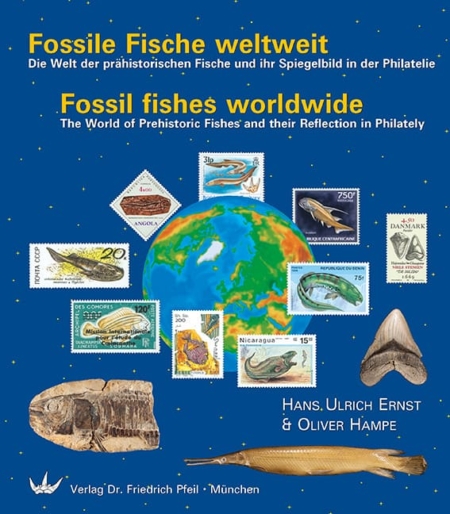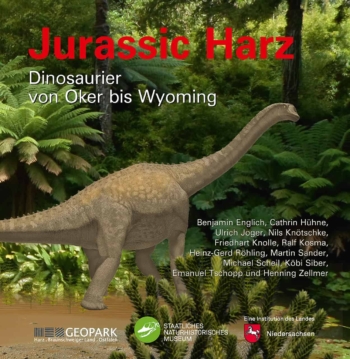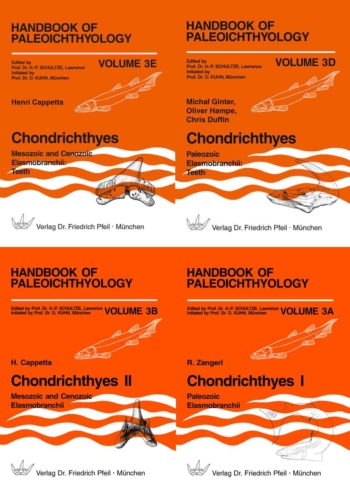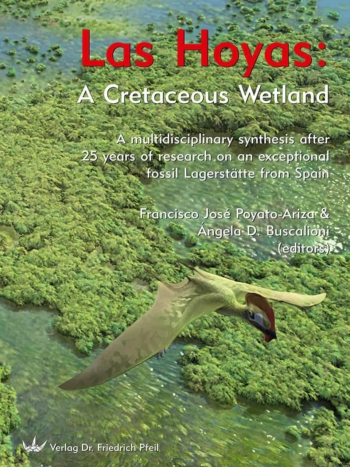The interest in collecting stamps starts in early age. First one collects stamps of all kind before one begins to specialize and to collect stamps of one or the other country or stamps of special themes, like historical persons of a country or ships, airplanes, trains, or animals. For years living fishes are a wide field for stamp collectors, because fishes appear on many stamps, especially on stamps of countries with an oceanic coastline or on stamps of island states. Fossils appeared first on stamps in the 1950s, nevertheless fossils appeared more frequently on stamps only in the 1980s so that it became of interest to specialize in stamps with fossils. The stamp issuers always tried and try to publish stamps, which people find of interest to collect and buy. Dinosaurs became on vogue in the 1970s and thereafter, and people were interested to see dinosaurs on stamps. Thus more and more countries issued dinosaur stamps in the 1980s, the 1990s and in the first 10 years of 21st century. The dinosaurs were often broadly interpreted and included fossil mammals too, especially if the latter were big. Other fossils were only presented rarely. One has to search for fossil invertebrates on stamps and even more for fossil plants on stamps. Fossil fish are there even better represented on stamps than invertebrates and plants, but still they are not easy to find because they are not specifically catalogued or presented together in a series. They have not found the interest dinosaurs have. Here to the merit of the authors, they have assembled presentations of fossil fishes on stamps, as postmarks, cancellations and postal stationeries.
In contrast to dinosaurs on stamps, fossil fishes appear often on stamps of the country where they actually occur. Examples are the lungfish Microceratodus angolensis, which is known only from Angola, the Cretaceous fish Vinctifer comptoni of the well known locality Chapada do Araripe in northeastern Brazil (state of Ceará), the sarcopterygian
Eusthenopteron foordi, which was long taken as a closest relative of the tetrapods, of the Upper Devonian locality Miguasha in Quebec, Canada, and fossil fishes of Australia, China, Greenland, Latvia, Lebanon and many other countries. Nevertheless like in dinosaurs few forms appear again and again as the big and ferocious looking ones like the about 6 m long placoderm Dinichthys / Dunkleosteus from the Upper Devonian of Cleveland, Ohio, USA, and the even larger shark Carcharocles megalodon, a close relative of the Great White of today.
North Korea offers a special example with the sarcopterygian Eusthenopteron foordi on a block with five stamps. It is a representation of comparative anatomy and evolution. The internal skeleton of the pectoral fin of Eusthenopteron foordi is compared with the wing of a bird and a bat, with the pectoral fin of a dolphin, the foreleg of a horse and the forearm of a human. And so that everyone understands that similarity is not compared here only, but that it is a demonstration of evolution from the pectoral fin to different expressions of the same basic structure within tetrapods, the picture of Darwin is placed besides Eusthenopteron.
Wrongly, the coelacanth Latimeria chalumnae (Coelacanthida or Actinistia) was connected with the origin of tetrapods. Coelacanths were well known in the fossil record, when Latimeria chalumnae was discovered 1938/39, so that J. L. B. Smith identified the new fish immediately, when he saw the crude sketch by Mrs. Latimer. Latimeria is a unique fish within extant living fishes, the only one of its kind. It is close related to its Cretaceous forerunners. Therefore it fits well within the representation of fossil fishes on stamps.
The authors present the fossil fishes on stamps in a systematic order of the fishes starting with the agnathans (Agnatha) progressing to jawed fishes (Gnathostomata), which include placoderms (Placodermi), cartilaginous fishes (Chondrichthyans), acanthodians and bony fishes (Osteichthyes or Osteognathostomata). The bony fishes represent two
groups, ray fin fishes (Actinopterygii) and lobe fin fishes (Sarcopterygii), which include the tetrapods. The reader gets thus a short introduction into the hierarchy of fishes. The frequency, with which the different taxa appear on stamps, has nothing to do with the frequency of fossil or extant fishes. The actinopterygians, which form 96 % of todays fishes and which were common in the fossil record, are underrepresented on stamps. In contrast the rare Latimeria can be found frequently on stamps.
That shows, that fossil fishes are selected for different reasons to be placed on stamps, and their appearance on stamps does not follow their frequency of appearance in the fossil record. That is shown in the book and makes it interesting for the reader who wants to know more about the figured fossil fishes. Thus the authors did a great job to bring together the information of these underrepresented fossils on stamps.
Hans-Peter Schultze, Januar 2016
Professor emeritus, University of Kansas






Reviews
There are no reviews yet.